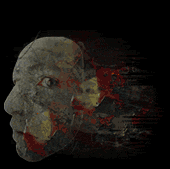

 |
 |
|
US Buys Up All Satellite War Images
The Pentagon has spent millions of dollars to prevent western media from seeing highly accurate civilian satellite pictures of the effects of bombing in Afghanistan, it was revealed yesterday. The images, which are taken from Ikonos, an advanced civilian satellite launched in 1999, are better than the spy satellite pictures available to the military during most of the cold war. The extraordinary detail of the images already taken by the satellite includes a line of terrorist trainees marching between training camps at Jalalabad. At the same resolution, it would be possible to see bodies lying on the ground after last week's bombing attacks. Under American law, the US defense department has legal power to exercise "shutter control" over civilian satellites launched from the US in order to prevent enemies using the images while America is at war. But no order for shutter control was given, even after the bombing raids began 10 days ago. The decision to shut down access to satellite images was taken last Thursday, after reports of heavy civilian casualties from the overnight bombing of training camps near Darunta, north-west of Jalalabad. Instead of invoking its legal powers, the Pentagon bought exclusive rights to all Ikonos satellite pictures of Afghanistan off Space Imaging, the company which runs the satellite. The agreement was made retrospectively to the start of the bombing raids. The US military does not need the pictures for its own purposes because it already has six imaging satellites in orbit, augmented by a seventh launched last weekend. Four of the satellites, called Keyholes, take photographic images estimated to be six to 10 times better than the 1 meter resolution available from Ikonos. The decision to use commercial rather than legal powers to bar access to satellite images was heavily criticized by US intelligence specialists last night. Since images of the bombed Afghan bases would not have shown the position of US forces or compromised US military security, the ban could have been challenged by news media as being a breach of the First Amendment, which guarantees press freedom. "If they had imposed shutter control, it is entirely possible that news organizations would have filed a lawsuit against the government arguing prior restraint censorship," said Dr John Pike, of Globalsecurity, a US website which publishes satellite images of military and alleged terrorist facilities around the world. The only alternative source of accurate satellite images would be the Russian Cosmos system. But Russia has not yet decided to step into the information void created by the Pentagon deal with Space Imaging. Duncan Campbell is a writer on intelligence matters, and is not the Guardian's Los Angeles correspondent of the same name. © Guardian Newspapers Limited 2001 |
 home |
letters |
activism |
about the war |
links
home |
letters |
activism |
about the war |
links

war/peace quotes |
guestbook |
contact